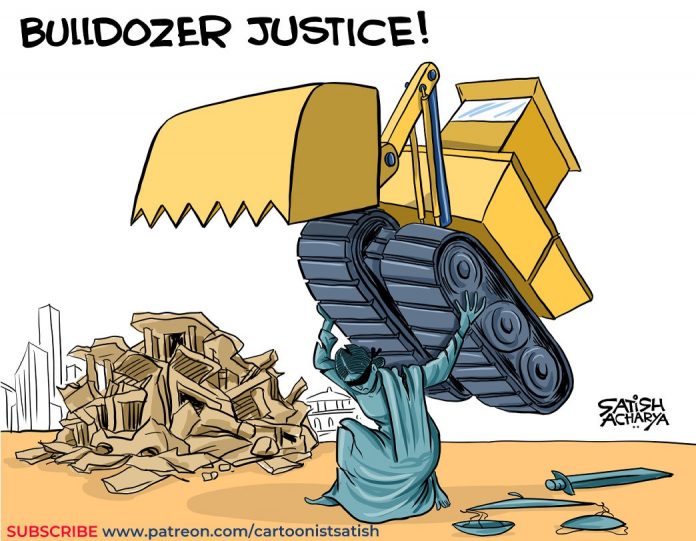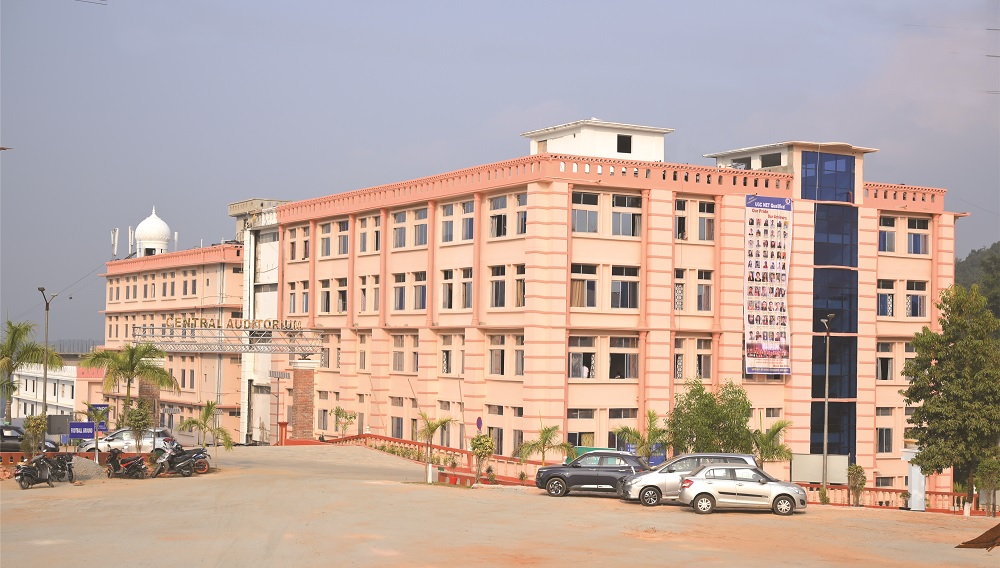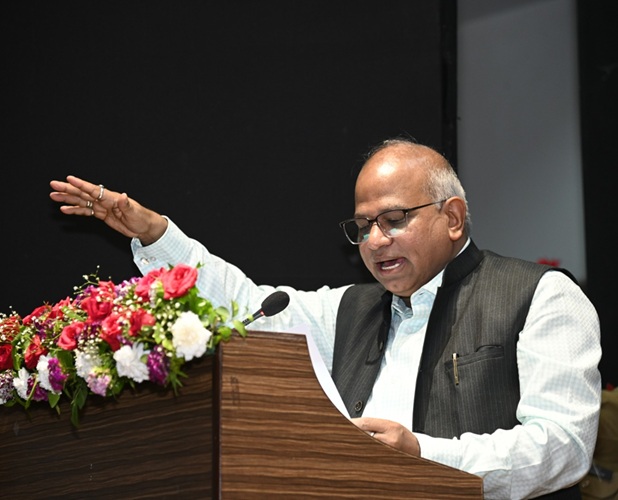The systematic demolition of Muslim homes in India is not just a matter of urban planning or law enforcement; it is a form of state-sanctioned violence that is eroding the very fabric of justice in the country. The alarming trend of targeting Muslim properties under the pretext of law enforcement has raised serious questions about the role of the judiciary, particularly the Supreme Court of India, which is the guardian of the Constitution.
The trend became more evident in September 2017, when Uttar Pradesh Chief Minister Yogi Adityanath declared that his government would bulldoze the properties of those involved in crimes against women and weaker sections of society. “My government will bulldoze houses of anyone even thinking of perpetuating crime against women and weaker sections of the society,” he warned. This statement was an ominous indication that the BJP government in Uttar Pradesh was prepared to bypass legal processes and resort to extrajudicial measures to deliver what it perceived as justice. However, this “bulldozer justice” has disproportionately targeted the Muslim community.
The silence of the Supreme Court in the face of such blatant violations of constitutional rights is deeply troubling. The court, which is supposed to act as a check on the executive and protect the rights of all citizens, has remained largely indifferent as bulldozers have demolished Muslim homes across the country. This is not merely a case of judicial inaction but appears to be a deliberate decision to ignore the dehumanization of Muslims, thereby normalizing fascism and undermining the very principles of justice and equality.
Did the Supreme Court not hear the audio of the Bhind Collector stating that if a Muslim commits a crime, their house will be demolished, unlike those of people from other religions
One of the most egregious examples of this “bulldozer justice“ occurred in Allahabad, where the house belonging to Afreen Fatima’s mother was demolished. Afreen, a student leader, had been a vocal critic of the Modi government during the protests against the Citizenship Amendment Act (CAA). Just two days before the demolition, police detained her 57-year-old father, Mohammad Javed, along with her mother, Parveen Fatima, and teenage sister, Somaiya, for participating in a protest. Despite the police’s justification that all due processes were followed, the selective targeting of Afreen’s house raises serious questions. If the house was indeed an “illegal structure,” why was it allowed to be built in the first place? And if it was built without proper approvals, will the authorities now demolish all such structures, or is this a punishment reserved solely for Muslims?
Similarly, on 17 August 2024, in Rajasthan’s Udaipur, the house of Rashid Khan was demolished a day after a 15-year-old boy, who was a tenant in the house, allegedly stabbed his classmate at school. The demolition, ordered by the Udaipur district administration and the Rajasthan Forest Department, was a stark reminder of the arbitrary nature of “bulldozer justice.” How can a person be punished for the alleged crime of a tenant’s son? And was there any legal process followed before the demolition? The Supreme Court, which should have been the first to question the legality of such actions, remained silent.
The demolition spree continued with the razing of the lavish bungalow of Haji Shahzad Ali, a former president and ex-Congress district vice president. Shahzad had gone to the police station to submit a memorandum demanding action against a Hindu “saint” who had made blasphemous comments. The situation escalated into a confrontation, resulting in the demolition of Shahzad’s house and the destruction of his cars by bulldozers.
Once again, the Supreme Court remained a mute spectator. If the construction of Shahzad’s house was illegal, why was it allowed to stand until this incident? Were the cars declared illegal before being destroyed? And why were the alleged culprits paraded and punished without trial?
The selective application of bulldozer justice has made it clear that this is not about upholding the law but about targeting a specific community. The judiciary’s silence in these cases is particularly disturbing when contrasted with its response to other incidents. For example, after the Jat reservation agitation in 2016, which resulted in 30 deaths and damages worth Rs. 34,000 crore, not a single house was demolished. This stark difference in treatment raises the question of whether the judiciary is truly committed to justice or is influenced by political pressures.
The judiciary’s role as the guardian of the Constitution is being called into question. Is the Supreme Court acting on its conscience, or is it succumbing to greed, personal gain, political influence or to please the majority ? The popularity of terms like “Bulldozer Raj,” “Bulldozer State,” “Bulldozer Justice,” “Bulldozer Baba,” and “Bulldozer Mama” among the Hindu majority is a reflection of how deeply entrenched this form of justice has become.
According to a report published in Frontline, over 150,000 homes have been razed, and 738,000 people have been left homeless in just two years, with Muslims and marginalized groups bearing the brunt of this destruction.
The Supreme Court must realize that if fascism prevails, the courts will become irrelevant, and lawyers will become jobless. In a fascist regime, decisions are made by political masters, not by the rule of law. The dehumanization of Indian Muslims through the demolition of their houses is not just an attack on a specific community; it is an attack on the very foundations of justice and democracy in India. The Supreme Court, as the custodian of the Constitution, has a duty to protect all citizens, regardless of their religion. Its silence in the face of such grave injustices is a betrayal of that duty.






0 Comments